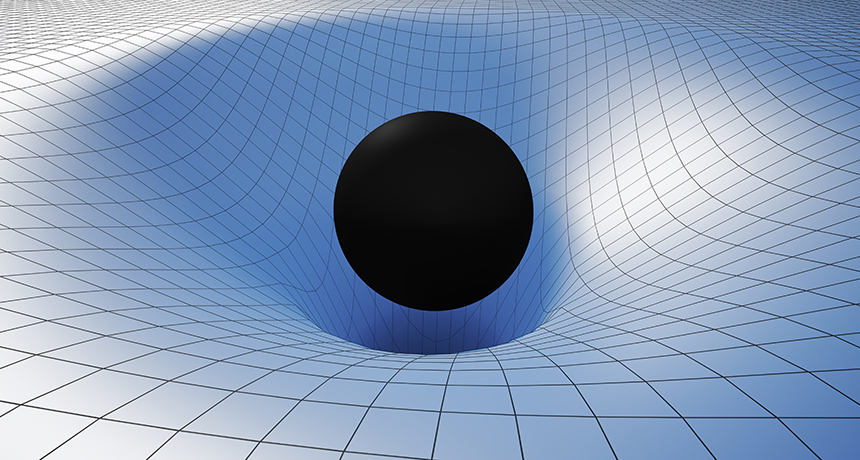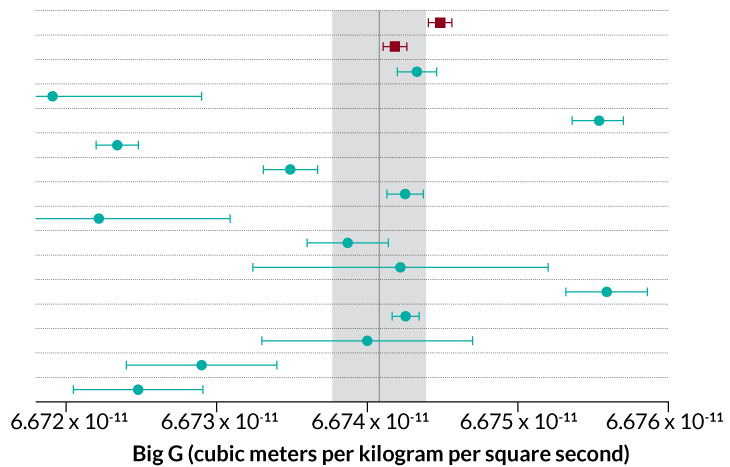The strength of gravity has been measured to new precision
Pinpointing Big G could help refine mass measurements for Earth and other celestial objects

HOMING IN Gravity (illustrated here bending spacetime) has been notoriously hard to measure. Now two new lab experiments estimate the strength of gravity, or Big G, with record precision.
vchal/Shutterstock
- More than 2 years ago
We now have the most precise estimates for the strength of gravity yet.
Two experiments measuring the tiny gravitational attraction between objects in a lab have measured Newton’s gravitational constant, or Big G, with an uncertainty of only about 0.00116 percent. Until now, the smallest margin of uncertainty for any G measurement has been 0.00137 percent.
The new set of G values, reported in the Aug. 30 Nature, is not the final word on G. The two values disagree slightly, and they don’t explain why previous G-measuring experiments have produced such a wide spread of estimates (SN Online: 4/30/15). Still, researchers may be able to use the new values, along with other estimates of G, to discover why measurements for this key fundamental constant are so finicky — and perhaps pin down the strength of gravity once and for all.
The exact value of G, which relates mass and distance to the force of gravity in Newton’s law of universal gravitation, has eluded scientists for centuries. That’s because the gravitational attraction between a pair of objects in a lab experiment is extremely small and susceptible to the gravitational influence of other nearby objects, often leaving researchers with high uncertainty about their measurements.
Weighing in
Two new measurements for the strength of gravity (red squares, with short error bars indicating uncertainty) fall close to or within the currently accepted range for Big G (shaded gray). The new estimates are much more precise than those from other experiments in the last 40 years (teal dots and longer error bars).

The current accepted value for G, based on measurements from the last 40 years, is 6.67408 × 10−11 meters cubed per kilogram per square second. That figure is saddled with an uncertainty of 0.0047 percent, making it thousands of times more imprecise than other fundamental constants — unchanging, universal values such as the charge of an electron or the speed of light (SN: 11/12/16, p. 24). The cloud of uncertainty surrounding G limits how well researchers can determine the masses of celestial objects and the values of other constants that are based on G (SN: 4/23/11, p. 28).
Physicist Shan-Qing Yang of Huazhong University of Science and Technology in Wuhan, China, and colleagues measured G using two instruments called torsion pendulums. Each device contains a metal-coated silica plate suspended by a thin wire and surrounded by steel spheres. The gravitational attraction between the plate and the spheres causes the plate to rotate on the wire toward the spheres.
But the two torsion pendulums had slightly differently setups to accommodate two ways of measuring G. With one torsion pendulum, the researchers measured G by monitoring the twist of the wire as the plate angled itself toward the spheres. The other torsion pendulum was rigged so that the metal plate dangled from a turntable, which spun to prevent the wire from twisting. With that torsion pendulum, the researchers measured G by tracking the turntable’s rotation.
To make their measurements as precise as possible, the researchers corrected for a long list of tiny disturbances, from slight variations in the density of materials used to make the torsion pendulums to seismic vibrations from earthquakes across the globe. “It’s amazing how much work went into this,” says Stephan Schlamminger, a physicist at the National Institute of Standards and Technology in Gaithersburg, Md., whose commentary on the study appears in the same issue of Nature. Conducting such a painstaking set of experiments “is like a piece of art.”
These torsion pendulum experiments yielded G values of 6.674184 × 10−11 and 6.674484 × 10−11 meters cubed per kilogram per square second, both with an uncertainty of about 0.00116 percent.
This record precision is “a fantastic accomplishment,” says Clive Speake, a physicist at the University of Birmingham in England not involved in the work, but the true value of G “is still a mystery.” Repeating these and other past experiments to identify previously unknown sources of uncertainty, or designing new G–measuring techniques, may help reveal why estimates for this key fundamental constant continue to disagree, he says.







